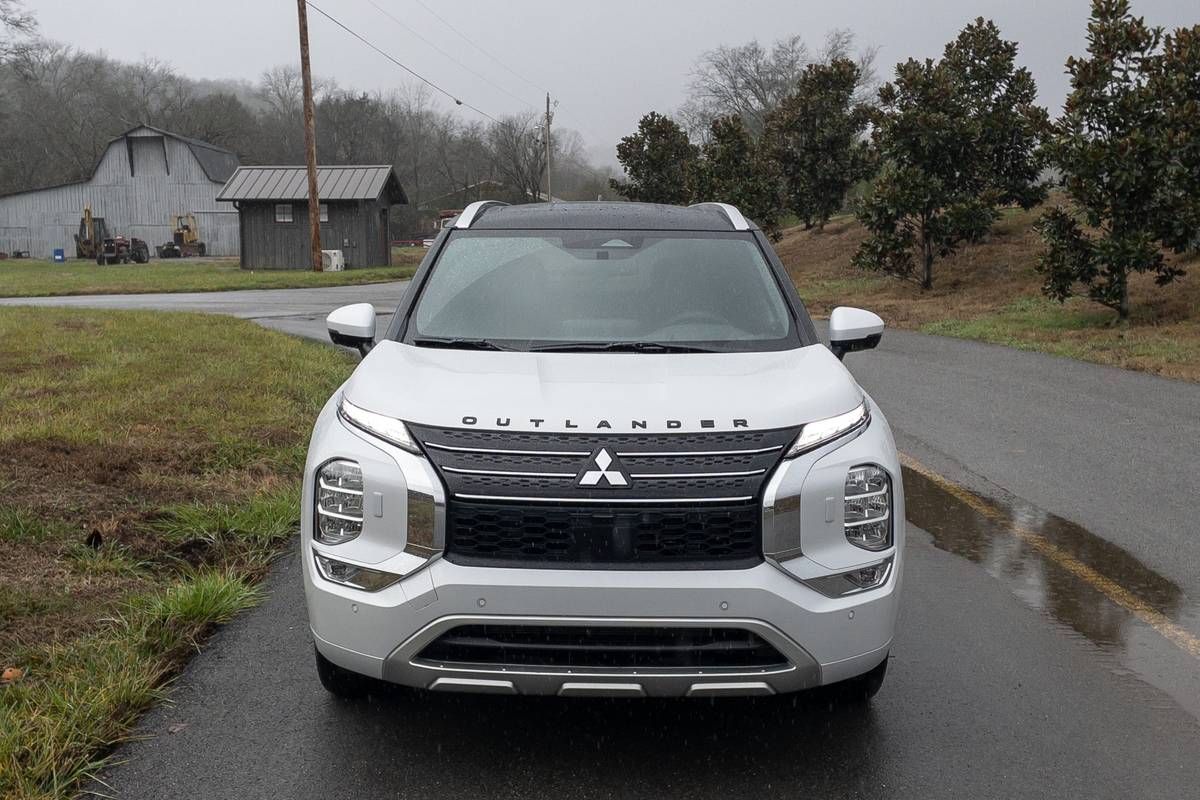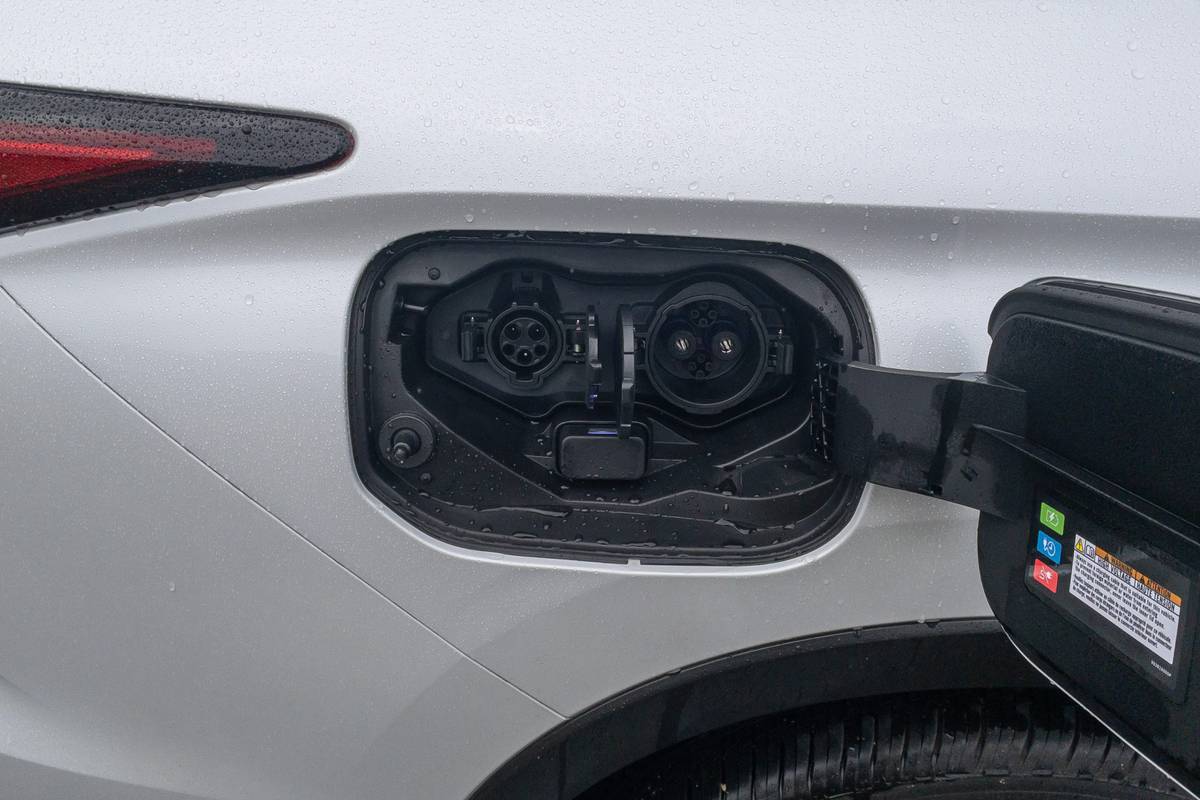Is the 2023 Mitsubishi Outlander PHEV a Good SUV? 4 Pros and 4 Cons

Prior to its 2022 redesign, the Mitsubishi Outlander was a bit of an also-ran in the hotly contested compact SUV segment, trailing any number of competitors in key areas such as performance, comfort and refinement. The 2022 update changed all that, making the Outlander a viable choice with a lot of appeal. For 2023, Mitsubishi spreads the love to its plug-in-hybrid Outlander, which gets all the same improvements along with better fuel economy.
Related: 2023 Mitsubishi Outlander Review: Quicker, Heavier, Pricier
Much of the credit for the improved Outlander goes to the partnership Mitsubishi has with Nissan and Renault; the Outlander shares its platform with the Nissan Rogue.
The Outlander PHEV gets the same somewhat edgy styling and upscale interior as its gas-only stablemate. It also has the same three rows of seating, giving it a distinctive appeal in a crowded field. The result is a compelling overall package.
Cars.com’s Brian Normile recently had a chance to sample a 2023 Outlander PHEV and was largely impressed. But the newest Outlander is not without some downsides, and the plug-in variant has a few flaws of its own. Hit the link above to read Normile’s expert review. For a quicker rundown, here are four things we like about the 2023 Mitsubishi Outlander PHEV and four things we don’t.
Things We Like

1. Inside Job
Like its gas-only counterpart, the Outlander PHEV gets a well-designed interior that’s comfortable and spacious — at least for everyone except scrunched third-row passengers. Controls and instruments are simple and easy to use, with plenty of physical knobs and buttons. A nice touch is the available massaging front seats, something not normally found in the category.
2. Powertrain Improvements
The 2023 Outlander PHEV comes equipped with a 2.4-liter four-cylinder engine, a front generator and two electric motors. The SUV gets an overall boost in power: 27 horsepower more than the previous-generation model and an even more notable 67 hp over the current gas-only version. That makes the PHEV powertrain the better choice all around, with quicker acceleration in addition to increased fuel economy.
3. Many Modes
Mitsubishi gives Outlander PHEV pilots plenty of driving modes to choose from. There are four PHEV-specific choices: all-electric operation (EV), gas-only to preserve the battery (Save), one that allows the engine to recharge the battery (Charge), and a fourth that lets the vehicle decide what’s best (Normal). Other modes tune the powertrain and steering response for specific conditions — including dry pavement, gravel, snow or mud — along with more choices to maximize economy or power.
4. Improved Electric Range
The redesigned Outlander PHEV can travel 14 miles farther than the model it replaces on electric power alone, for a total claimed all-electric range of 38 miles. While perhaps not enough for extended drives, that’s enough for commuters to drive to work and back without waking up the gas engine.
More From Cars.com:
- How Do Car Seats Fit in a 2022 Mitsubishi Outlander?
- What’s Bidirectional Charging and Which EVs Offer It?
- Mitsubishi Increases Range, Price of 2023 Outlander PHEV
- Research the Mitsubishi Outlander PHEV
- Find Your Next Car
Things We Don’t Like

1. Second-Class Third Row
While an unusual feature in a compact SUV, a standard third row helps the Outlander PHEV stand out. However, it’s tiny, and it’s of limited use as a result. There really isn’t room for adults back there even with the second row slid forward, and larger kids will likely not be very comfortable either. Another drawback is the third-row head restraints block much of the view to the rear. Most owners will be better off leaving the third row folded.
2. Middling MPG
Mitsubishi puts the Outlander PHEV’s fuel economy at a decent 64 mpg-equivalent. When operating solely on gasoline, the manufacturer claims a rating of 25/27/26 mpg city/highway/combined. While that means overall fuel economy is better than the conventionally powered Outlander, the Ford Escape PHEV and Toyota RAV4 Prime both beat it with an EPA-estimated 105 mpg-e and 94 mpg-e, respectively. To be fair, the Escape PHEV is only available with front-wheel drive, but the RAV4 Prime has AWD and a better electric-only range estimate of 42 miles.
3. Quirky Brakes
Activating the one-pedal driving mode turns on the highest level of regenerative braking, aggressively slowing the Outlander PHEV. But it still won’t bring the vehicle to a complete stop, requiring the driver to press the brake pedal to complete the job. Worse, the brakes are particularly grabby when the pedal is pushed, making smooth operation more difficult. Even when the one-pedal feature is switched off, the brakes have a mushy feel.
4. Hard Charger
The Outlander PHEV is equipped with two charging ports, one for normal charging and a second for DC fast charging. While two ports are an unusual choice, the choice of a CHAdeMO port for fast charging is even more curious. CHAdeMO is the standard in Japan, but Combined Charging System chargers have become the standard in the U.S. and are much easier to use.
Related Video:
Cars.com’s Editorial department is your source for automotive news and reviews. In line with Cars.com’s long-standing ethics policy, editors and reviewers don’t accept gifts or free trips from automakers. The Editorial department is independent of Cars.com’s advertising, sales and sponsored content departments.
Featured stories




